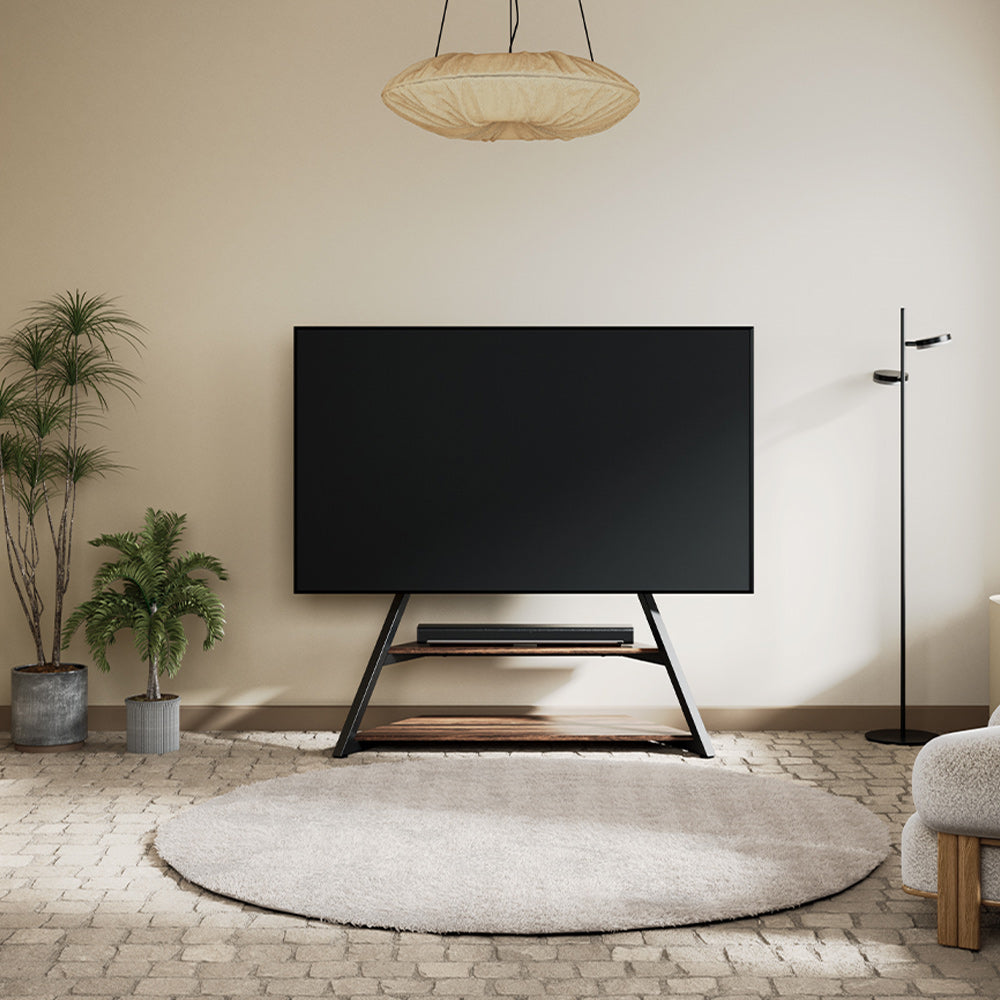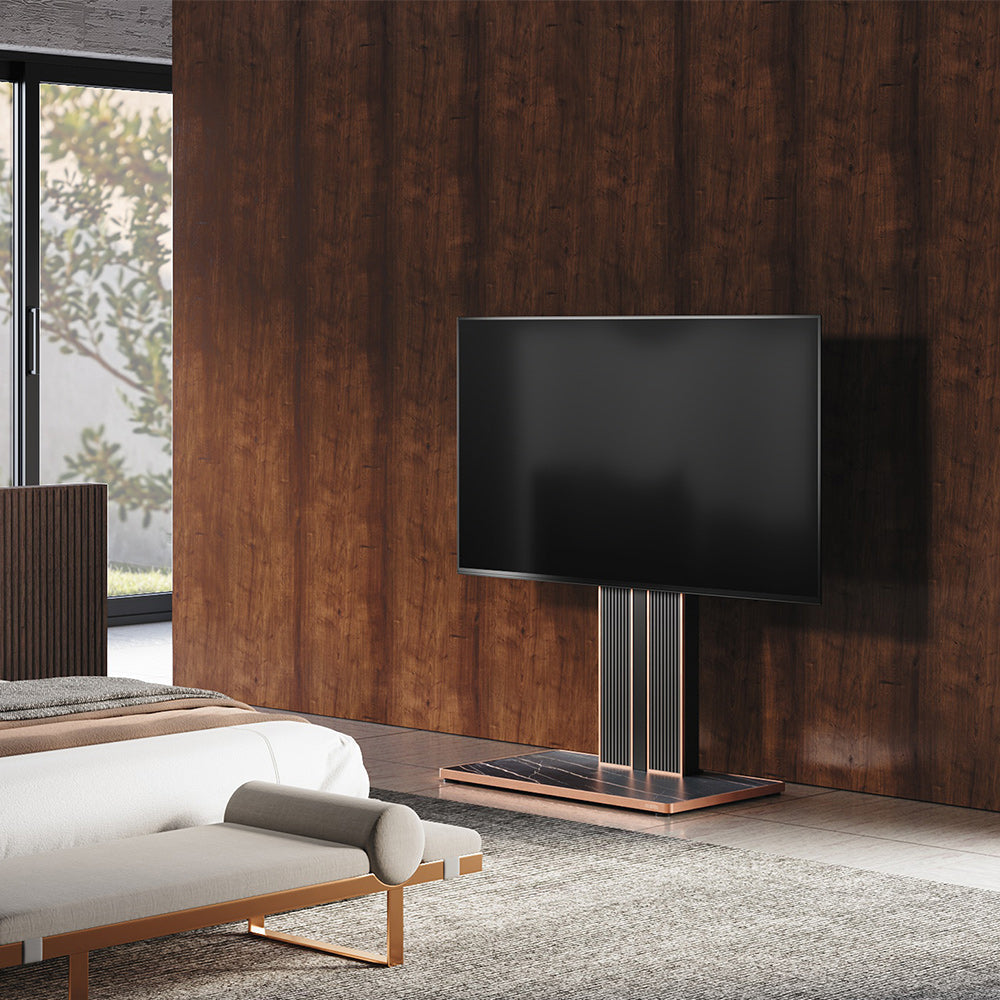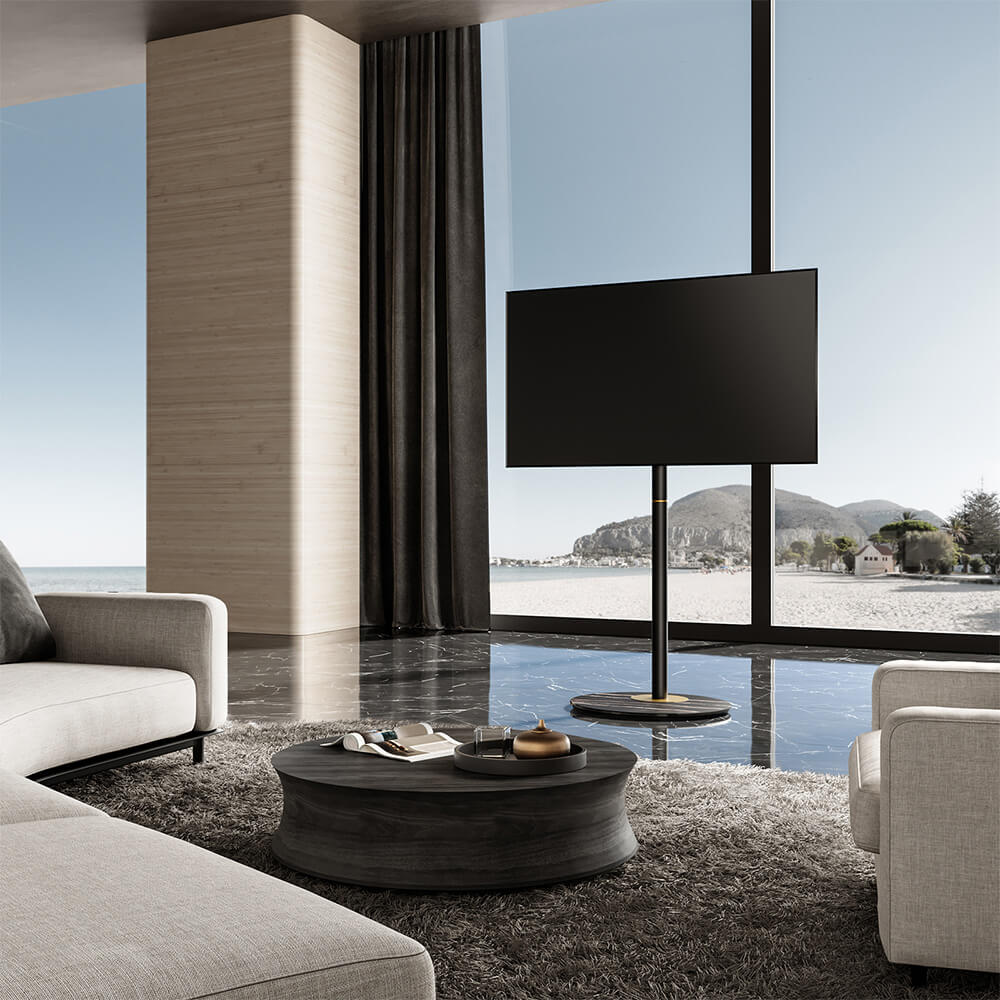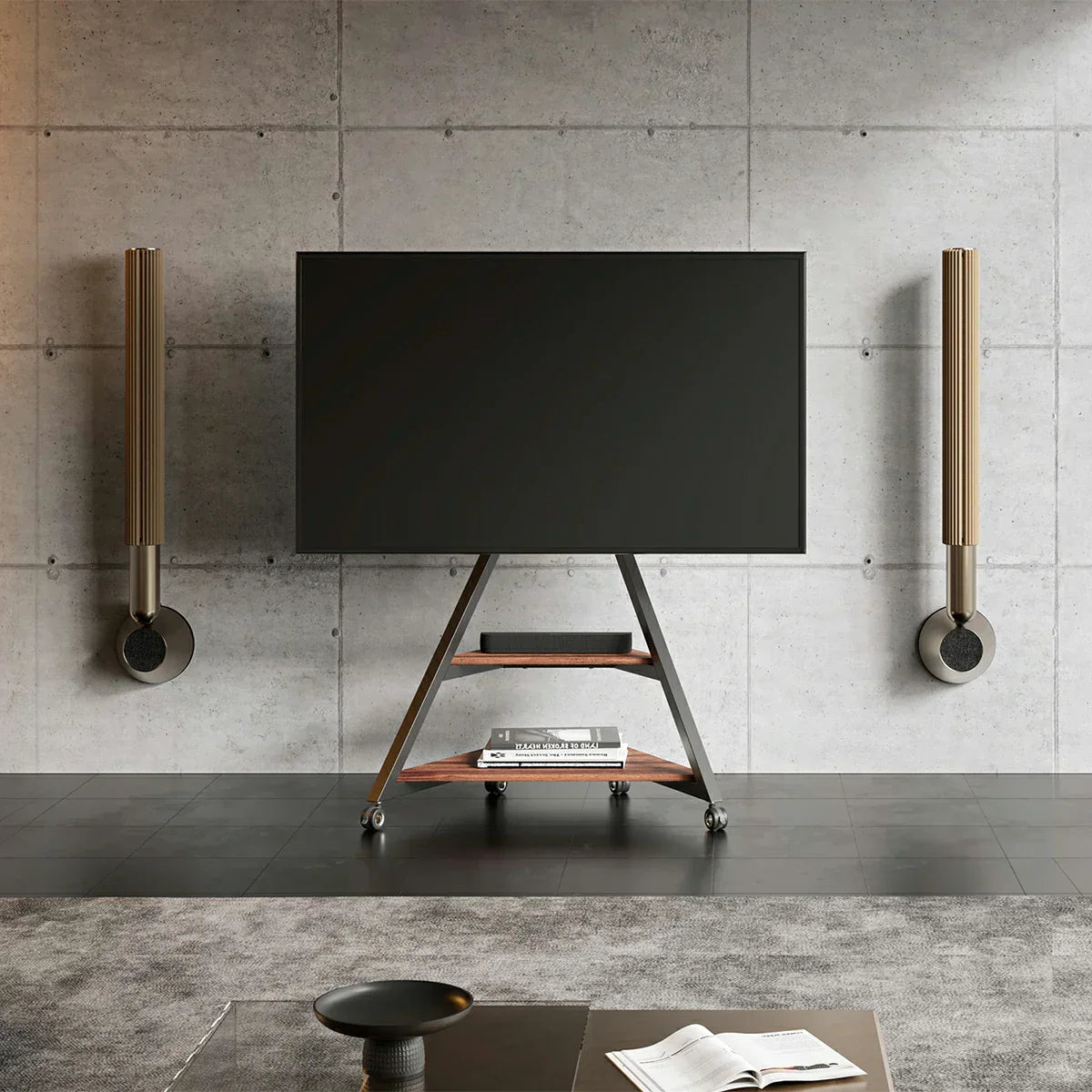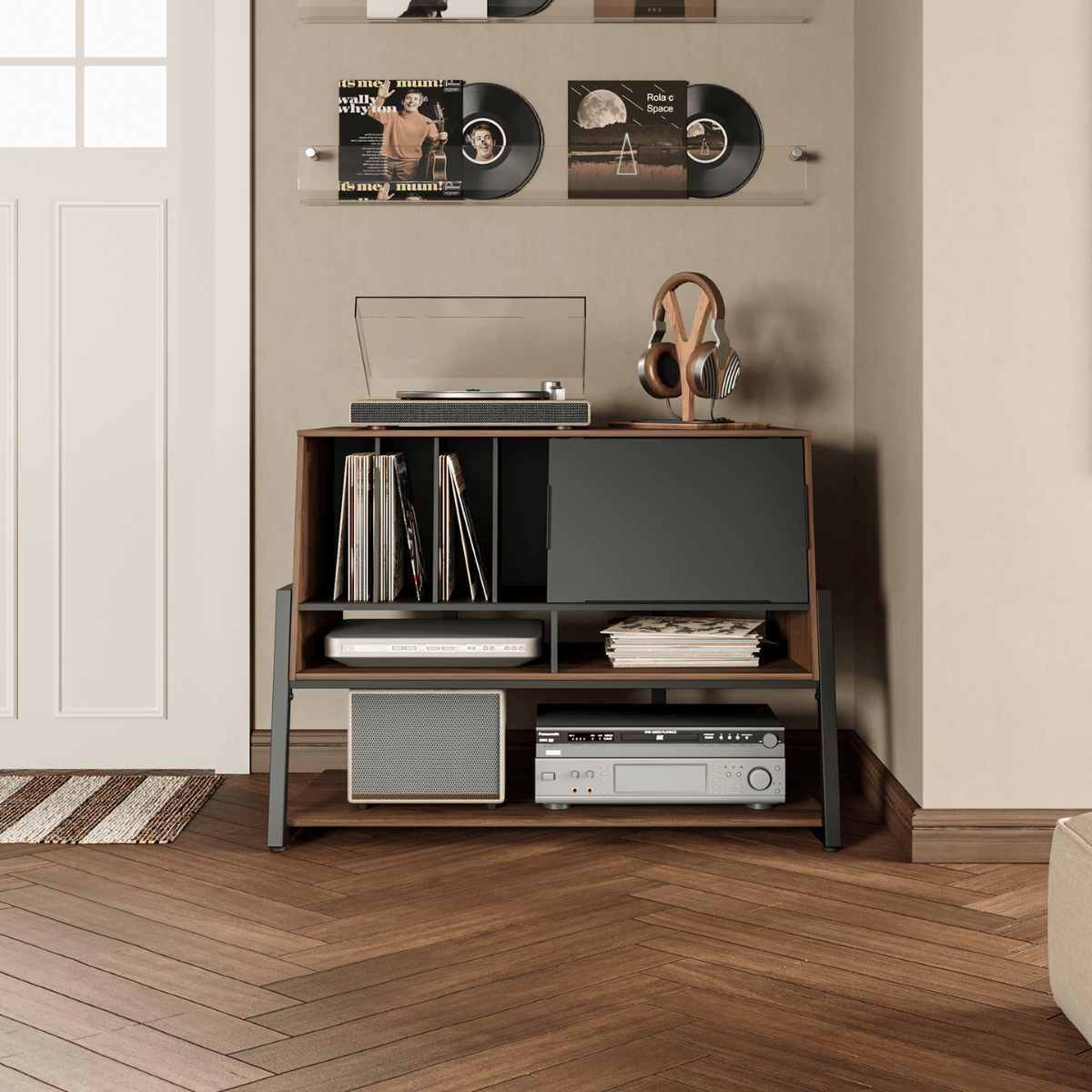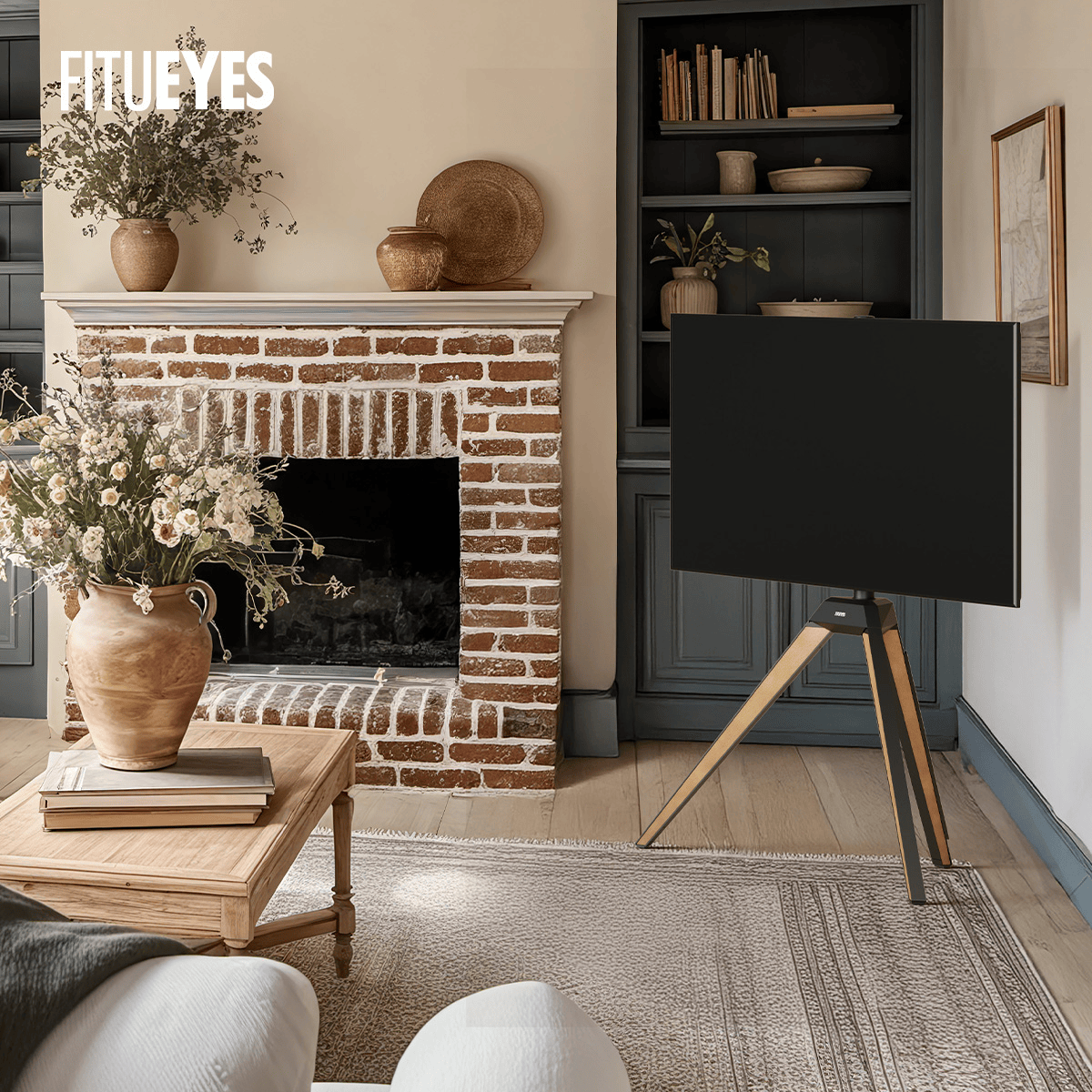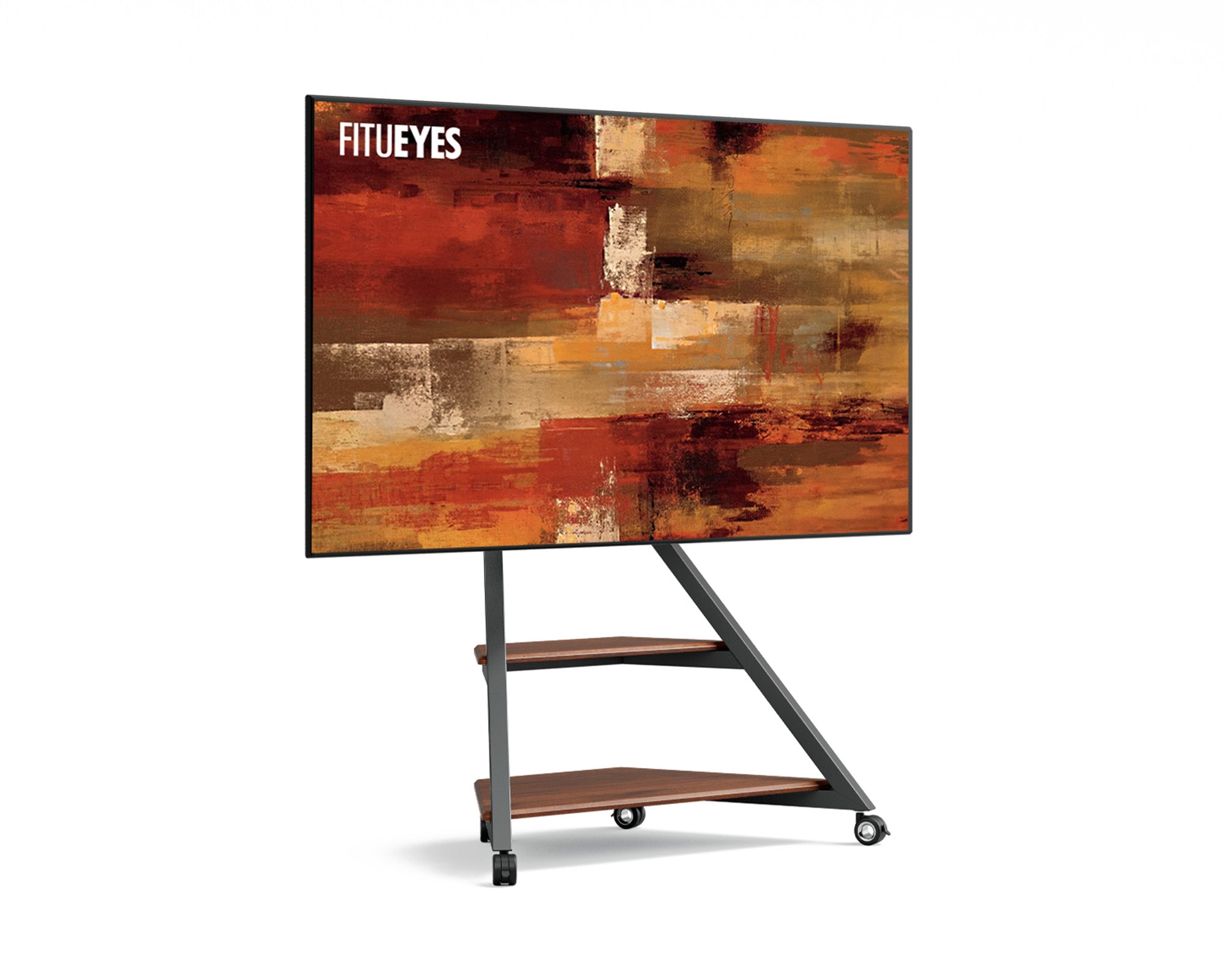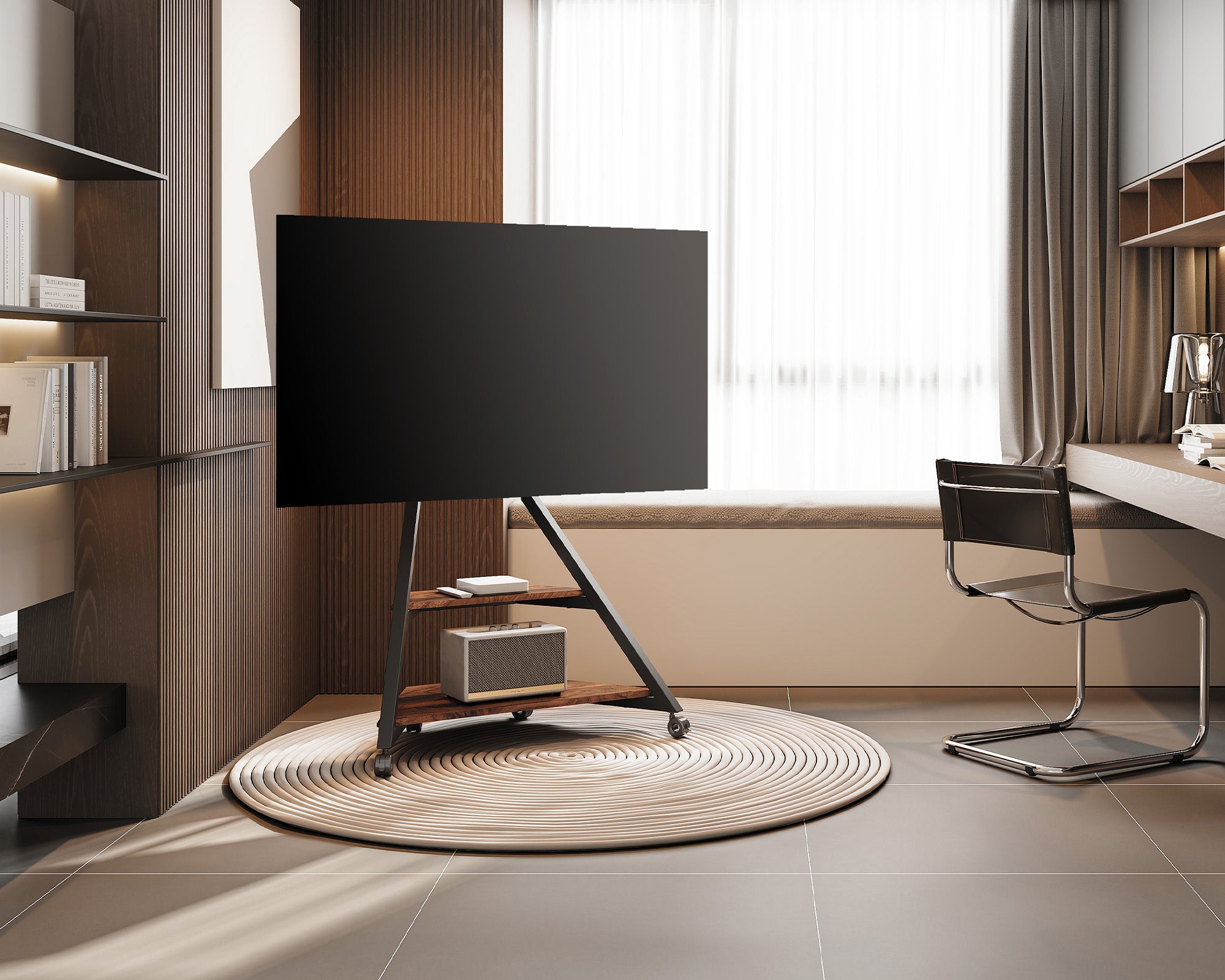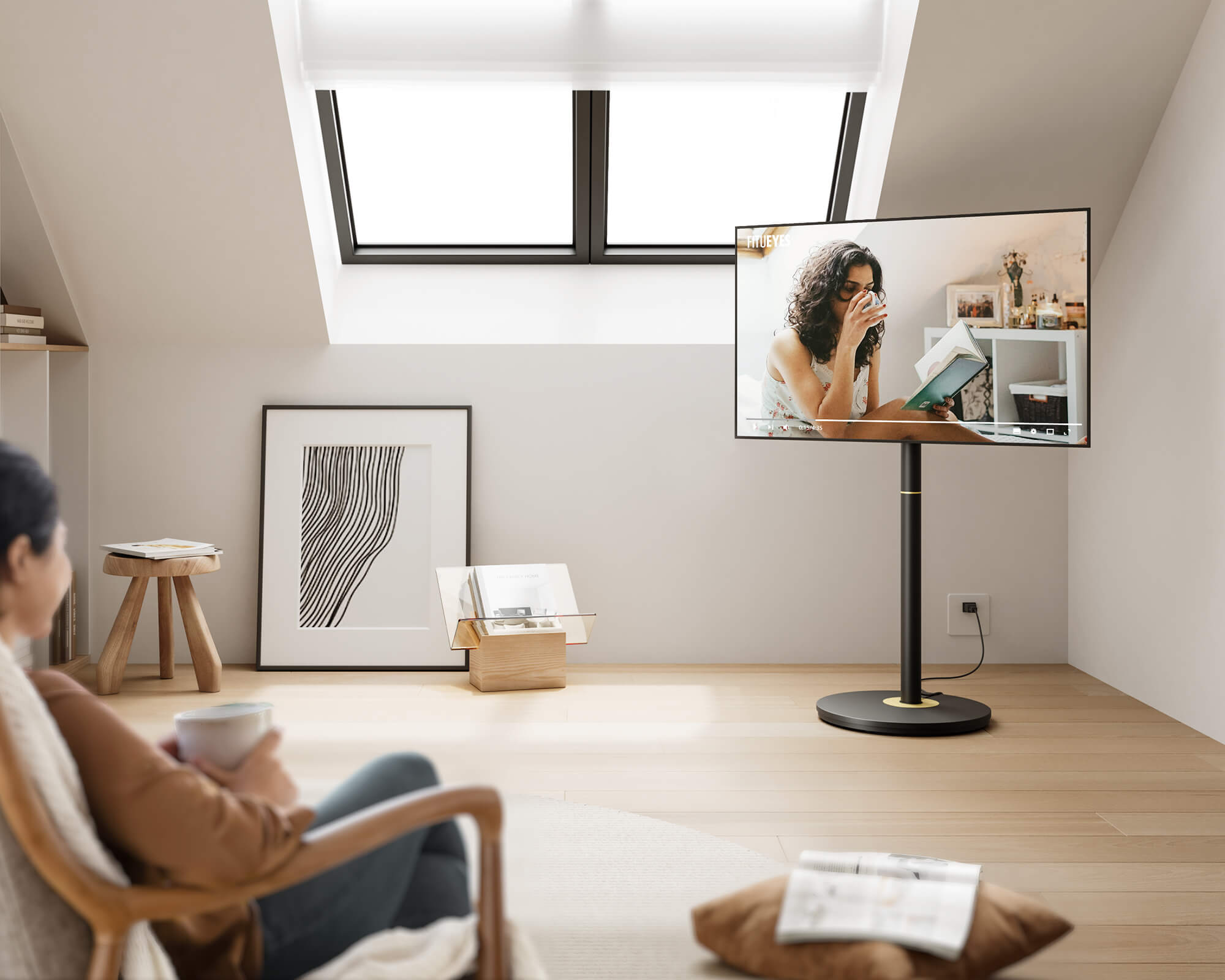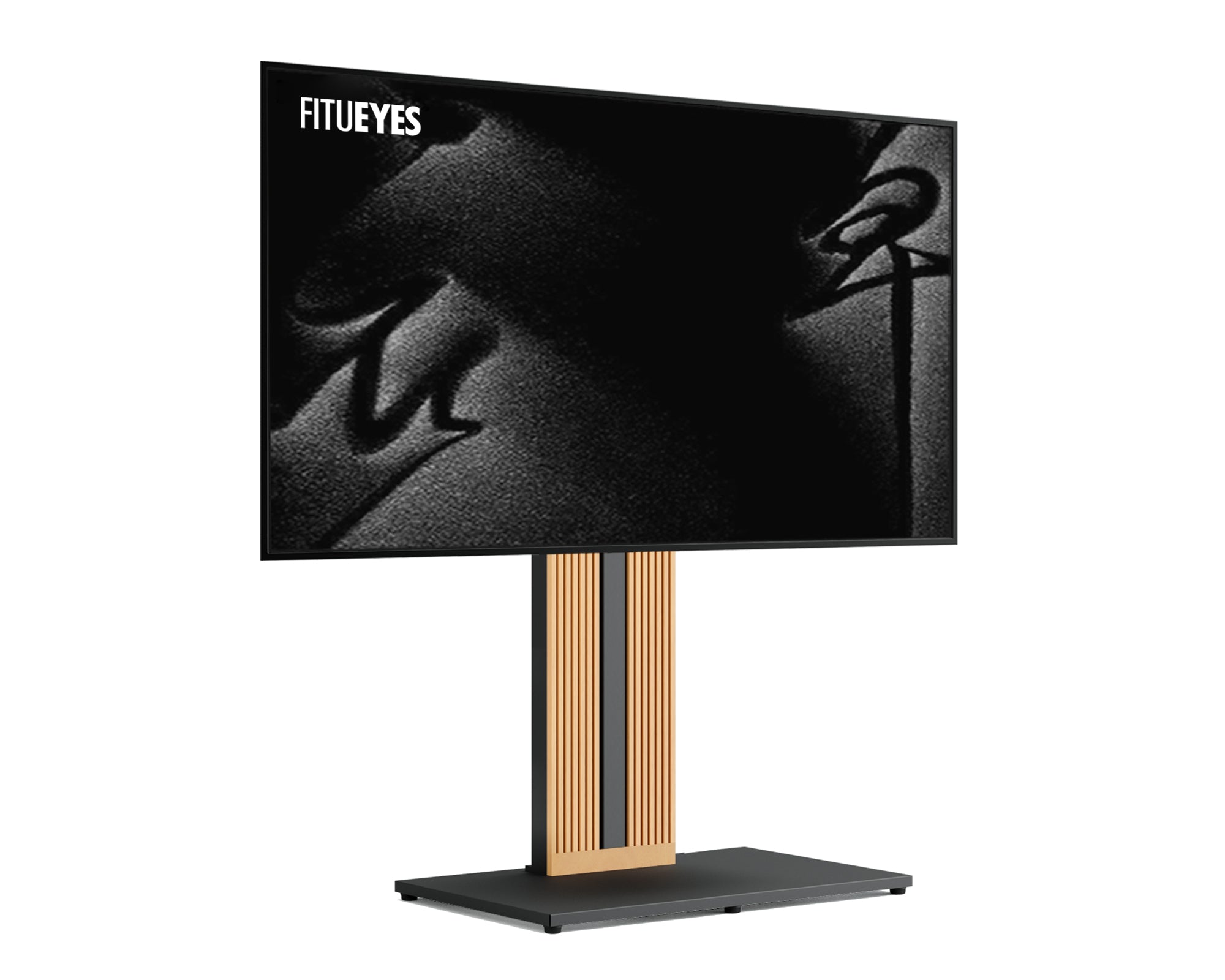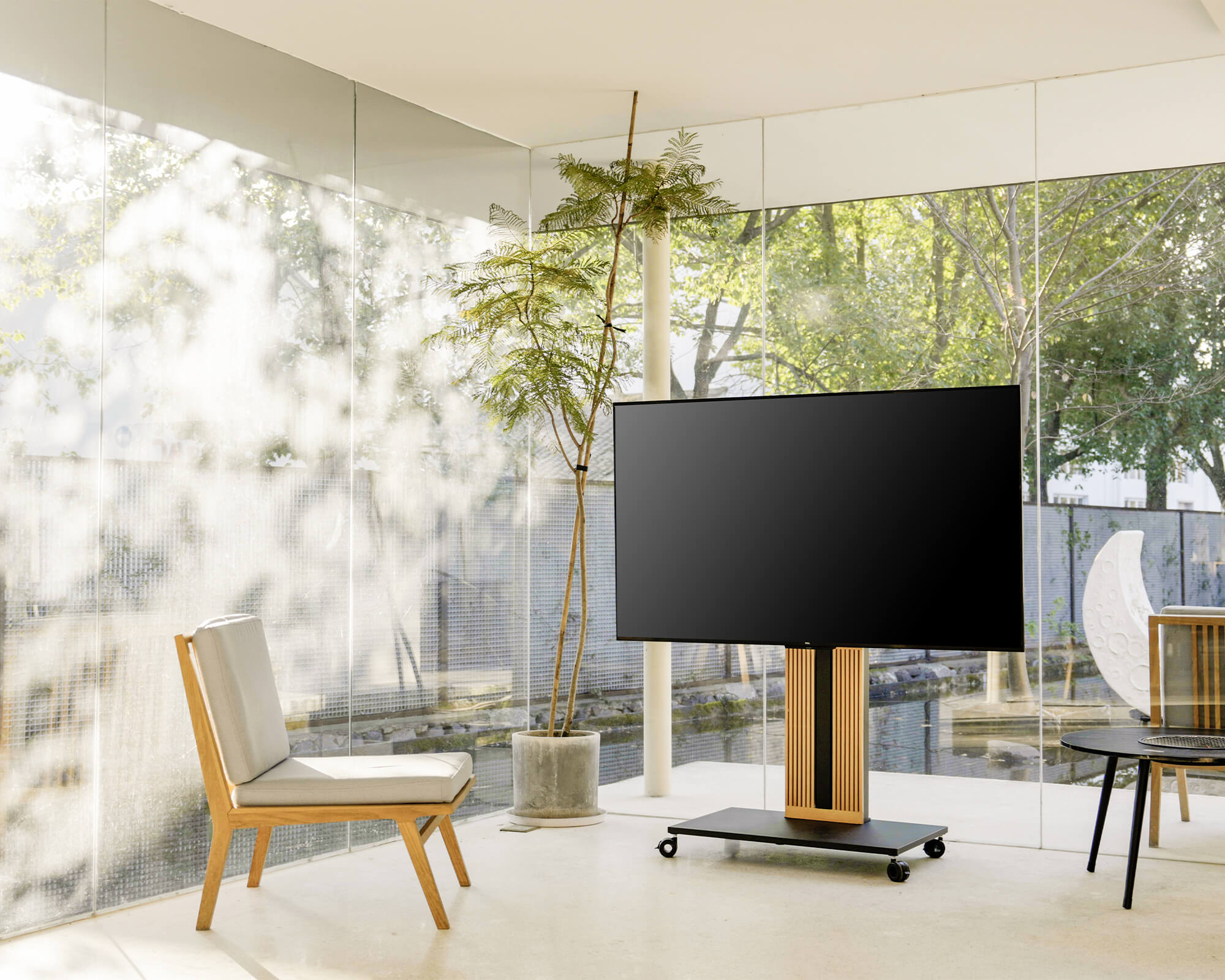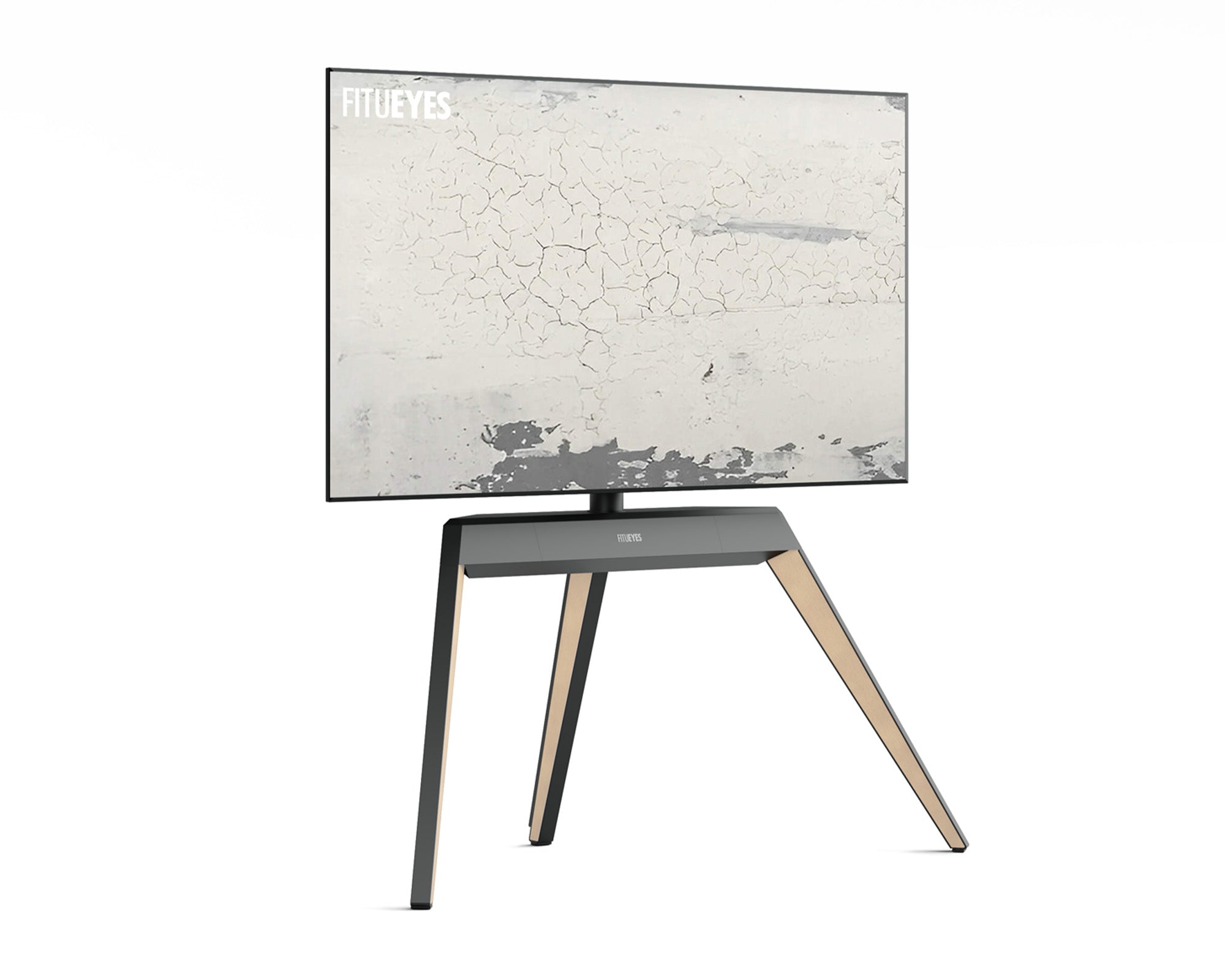When choosing the right TV stand or console for your TV, the size is crucial for both safety and aesthetics. A stand that’s too small may not provide the necessary stability, while one that’s too large could overwhelm the space. To ensure your TV fits perfectly, aim for a stand that’s 2-3 inches wider than the overall width of your TV. This helps maintain balance and ensures your TV is securely supported. In this guide, we’ll walk you through everything you need to know— from sizing and support to style and functionality— to help you pick the perfect TV stand that complements both your TV and room. Let’s dive in!
How to Measure Your TV for the Perfect Fit?
Before shopping, take a few quick measurements to determine exactly what size TV stand you need.
Measure Your TV’s Width and Height
-
Use a tape measure to check your TV’s width (left edge to right edge) and height (top edge to bottom edge).
-
Write these measurements down clearly—they’ll be your main reference.
Choose a TV Stand Wider than Your TV
-
Select a stand that's at least 20% wider than your TV for safety and aesthetics.
-
Example: If your TV is 50 inches wide, choose a stand around 60 inches wide.
Related Reading: How to Choose the Right TV Stand: Top Tips for Your Space?

Selecting the Right TV Stand Height
Watching TV comfortably is crucial, especially if you spend hours binge-watching your favorite shows.
Ideal Viewing Height
-
Ideally, the center of your TV screen should be at eye level when you’re seated (typically about 42 inches from the floor).
-
If your seating is higher or lower than average, adjust the stand height accordingly.
Adjustable TV Stands
-
Consider stands or consoles with adjustable height settings.
-
This flexibility lets you fine-tune the height exactly to your comfort.
Ensure Your Stand Can Handle Your TV’s Weight
Safety first! Ensuring your TV stand can adequately support your TV's weight prevents dangerous accidents.
Check Weight Capacity
-
Always verify the maximum weight capacity provided by the manufacturer.
-
For large TVs (65 inches and up), opt for solid wood or metal stands with higher weight capacities.
Stability and Anti-Tip Safety
-
Choose a stand that feels sturdy and well-balanced.
-
For homes with kids or pets, invest in anti-tip kits or stands specifically designed with extra stability features.
Matching Your TV Stand to Your Room Size
Your TV stand should blend seamlessly into your room, not overwhelm it or feel undersized.
Small Rooms and Apartments
-
Go for compact, multifunctional stands.
-
Consider a wood corner TV stand to maximize space and style.
Large Living Rooms
-
Larger stands or consoles can anchor the space and prevent the room from feeling empty.
-
Wider units often offer extra storage and shelving, ideal for additional electronics or decor.

Best Materials for TV Stands: What’s Right for You?
The material impacts both the look and durability of your TV stand.
|
Material |
Pros |
Cons |
|
Solid Wood |
Durable, timeless style |
Heavier, typically more expensive |
|
Engineered Wood |
Affordable, lightweight |
Less durable than solid wood |
|
Metal |
Extremely durable, modern look |
Can be heavy, style-specific |
|
Glass |
Elegant, minimalist design |
Fragile, needs regular cleaning |
-
Solid wood or metal stands are best for large TVs.
-
Engineered wood or glass works well for smaller TVs or stylish, modern interiors.
Storage and Cable Management: Keeping It Tidy
Nobody likes a messy TV area full of tangled cables and scattered remotes.
Look for Built-in Storage
-
Cabinets or shelves store gaming consoles, streaming devices, and other accessories neatly out of sight.
Effective Cable Management
-
Choose stands with cable holes, hidden channels, or compartments.
-
Good cable management keeps wires organized and prevents safety hazards.
Choosing a TV Stand That Complements Your Decor
The right TV stand should match your personal style and home decor seamlessly. If you're looking for a stylish yet space-saving solution, consider options like the FITUEYES Wood Corner TV Stand. Designed to blend perfectly into corners, it offers great stability, cable management, and a sleek design ideal for smaller rooms.
Match Your Existing Furniture
-
Look at your existing decor and choose materials or colors that blend naturally.
-
Wood finishes like oak or walnut suit traditional spaces; black, white, or metal are great for modern rooms.
Balancing Functionality and Style
-
Don’t sacrifice practicality for looks. Select a stand that combines aesthetics with useful features like storage or adjustable heights.

FAQs
Can My TV Stand Be Smaller Than My TV?
-
Generally, no. A TV stand narrower than your TV risks instability and an awkward appearance. Always opt for one slightly wider than your TV.
How High Should a TV Stand Be?
-
Typically, a stand height of around 20–24 inches is best, positioning the TV center around eye level when seated.
Is It Better to Wall Mount or Use a Stand?
-
Both have advantages:
-
Wall mounts save space and look sleek.
-
Stands provide storage, are easier to install, and often offer better cable management.
Recommended TV Stand Sizes: Quick Reference Chart
|
TV Size |
TV Width (approx.) |
Recommended Stand Width |
|
32-inch |
28 inches |
32–40 inches |
|
43-inch |
38 inches |
44–50 inches |
|
50–55 inch |
44–48 inches |
52–60 inches |
|
60–65 inch |
52–57 inches |
62–70 inches |
|
70–75 inch |
61–66 inches |
72–80 inches |
Final Thoughts: Making the Right Choice
Selecting the correct TV stand size ensures not only an aesthetically pleasing setup but also a safe and comfortable viewing experience. Consider your TV size, room dimensions, storage needs, and personal style to choose the best stand for your home.









